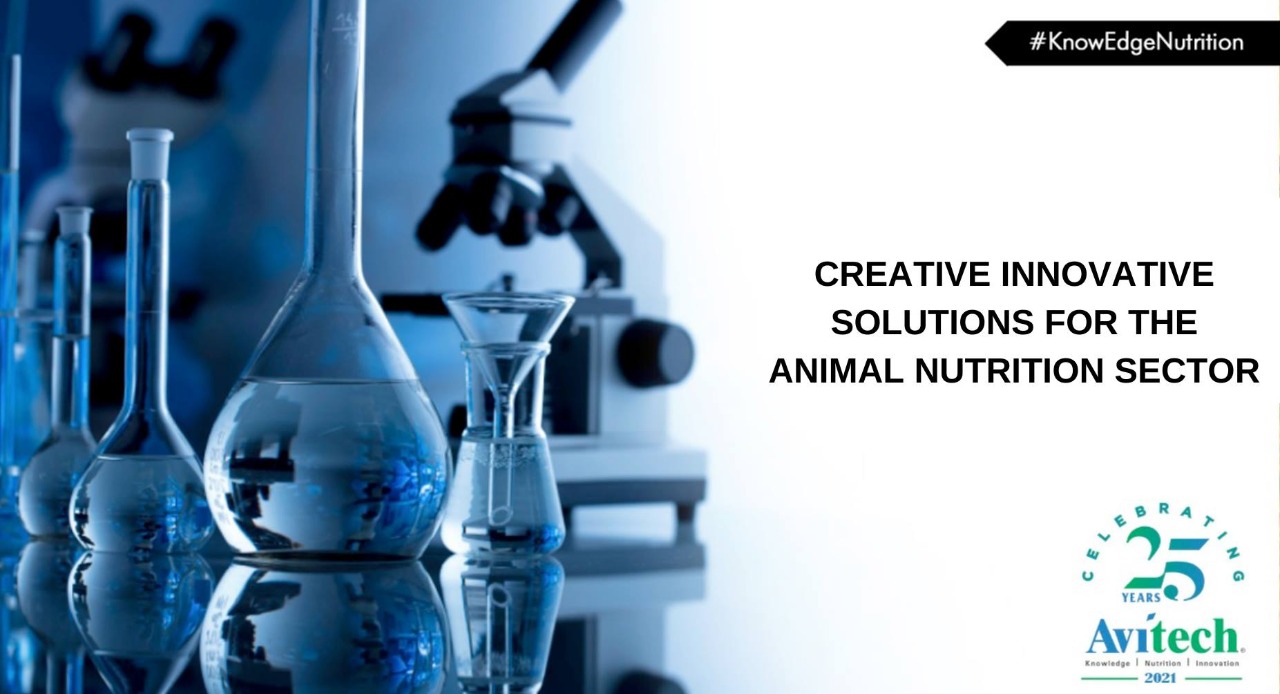 Nov 17,2021
Nov 17,2021

Naturally occurring
toxins in plants are the nature's defensive
agents for the plants and produce deleterious effects in livestock, and known
as Antinutritional factors (ANFs). Certain enzymes are also used to supplement the naturally occurring enzymes (e.g. lipase).
A description of ANFs and methods to eliminate
/minimize these in certain
feed ingredients are given.
In poultry nutrition,
the feed ingredients are also supplemented with feed supplements such as toxin binders, antioxidants. Emulsifiers, vitamins, trace minerals etc.
In animal nutrition Soybean meal (SBM) is the principle
protein source for
monogastrics. Soybeans contain
a high quality protein with
a good amino acid profile, but for methionine, and are highly digestible in the small intestine.
It is also an important constituent of Poultry nutrition.
Soybeans contain several ANFs.. Some ANFs are of nutritional significance and can be destroyed/inactivated by proper heat.
Within animal nutrition, several tests are available in the feed additive and feed supplement industry to estimate the destruction
or inactiveness of ANFs. These may be
the ones to determine the ANFs directly or involve the estimation of other enzymes
or solubility property of
protein, nitrogen in water, or
KOH solution. The latter are commonly employed
to determine the ANFs in commercial channels
Trypsin inhibitors - The principle trypsin inhibitors are the Kunitz factor and the Bowman-Birk factor. The residual trypsin inhibitor in soy products combines with
the trypsin in the small intestine
and forms an inactive complex thus reducing digestibility of
Lectins
– Lectin is a protein with a specific binding affinity for sugar residues. The
lectin sugar interaction is important at the level
of the membrane receptors in the gut where it is thought to be responsible for agglutination and mitosis. Lectins
are heat sensitive and are therefore only present at residual levels in soybean
products.
COTTONSEED
(Gossypium Spp) MEAL
Generally for poultry
nutrition, the cottonseed contains: hull 23%, oil 17%, linters 8%, and general meal 52%.
2. Cyclopropenoid fatty acids (CPFA)
The
cyclopropenoid fatty acids (given as poultry feed supplement) are the components of residual oil (0.01% in meal obtained
by commercial practices of
extraction), increase the
permeability of the vitelline
membrane for iron of yolk to diffuse into the albumen,
resulting in the formation of red iron-albumen complex accounting for pink white
in stored eggs.
Toxic effects of feeding cottonseed meal - The signs of gossypol toxicity
in poultry are decreased appetite, weight loss, leg weakness, decreased egg size, egg yolk discoloration, reduced
hatchability, lowering of hemoglobin, total erythrocytic
count. FG acts by reducing oxygen carrying capacity of the blood
(Alford et al., 1996), may
adversely affect male reproductive function (testicular damage) (Randel et al. , 1996).
Mustard meal is a
fairly good source of crude protein (36%), lysine,
methionine and energy in the feed additive industry. The ANFs
in mustard meal are: (i) glucosinolates, (ii)
erucic acid, (iii) high fibre, (iv) NSPs. Besides
these orgemone seed is a frequent contaminant in mustard cake.
Broilers
- Many workers in animal nutrition industry come across increase in
weight of thyroid gland, liver and fat content
of liver fat due to feeding 20 - 30% MC,
attributed to the erucic acid content of MC The toxic effects
of intrinsic principles present in mustard
cake decreased with age of the bird. Expellermeal (25%) on protein
basis in WL chick (1d to 15 weeks)
diet without affecting body weight gain, feed
efficiency and hematological
parameters
Layers
- In layers,
inclusion of MC in place of groundnut
meal and fishmeal ( as used along with poultry feed supplements) at 10% level in iso caloric and iso-nitrogenous diets significantly reduced the egg production and feed
efficiency Iodine supplementation failed to improve egg production in birds fed MC based
poultry nutrition diet.
Contrary to these findings several workers (found no adverse effect on egg production, egg
weight, feed efficiency, and body
weight in layers
fed with diets
containing 10-16% expeller
or solvent extracted
MC.
Castor Seed (Ricinus communis)
Meal
Castor seed meal contains
30-40% protein. Castor
seed meal contains
the ANF "Ricin". Ricin was found to
have high haemoagglutinating and proteolytic activity.
Castor seed meal contains ricin to an extent of 0.22- 1.0%. The Castor seed meal also has
allergen, ricinine and chlorogenic
acid but toxicity is only due to the
presence of ricin. The type of solvent used
for oil extraction has influence on level of
toxins and toxicity
Mahua Seed Meal
Mahua (Madhuca indica, M. longifolia) seed meal used is a moderate source
of protein (15-24%).
Mahua seed meal contains saponins:
Madlongiside A, B, C,
D; Mi-saponin A The saponins are having hemolytic effect. These have to
be supplemented with feed
additives. Mahua cake
in chick mash at about 12% in feed caused mortality of all chicks within
five hours. Even at 5%, mahua seed meal depressed the performance of chicks. Ethanol treatment
of mahua seed meal reduced 86.46% saponins and 31.77% tannins (Singh and Agarwala,
1989).
Guar (Cyamopsis
tetragonaloba L.) Meal
Guar meal, although
a protein source in poultry nutrition, causes
deleterious effects in poultry, because
of residual gum. Guar meal can
be incorporated up to 8% in
commercial broiler (1 to 6 weeks)
diet. The higher levels of inclusion (16 and
32%) of guar meal caused depression in growth and feed efficiency, and
sticky diarrhea and high mortality
(25 to 70%) Residual gum (18 to 21%) present in guar meal may be responsible for deleterious effects
in broilers. Trypsin
inhibitors, and saponins
may be the contributing
factors for guar meal toxicity.
guar meal can be incorporated in WL grower
diet and layer diets up to
10 and 11%, respectively
The depression in egg production
may be corrected by increasing the dietary protein
ABSTRACT
ANFs occurring in animal nutrition are the natural protective substances for the plant. It is possible that at a very low substitution, the ANFs of the vegetable protein sources such as guar meal, castor seed meal, and mahua
meal, etc might have a
nutraceutical function or immunological function.